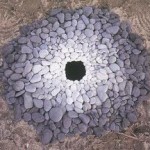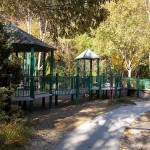Inclusive Playgrounds: Part One
I wanted to do a few posts in playgrounds that are designed and function to be inclusive of all users. I have been doing a little research and wanted to share some interesting points I have found and struggles I am battling.

Accessible Design vs. Universal Design
The days of accessible playgrounds are over, inclusive playgrounds are our goal.
Accessible Design “describes a site, building, facility, or portion thereof that complies with the minimum accessibility standards as set forth under the Americans with Disabilities Act, Architectural Barriers Act or local building code…. Accessible design aims at minimum requirements to achieve usability.” Do you want to meet the minimum of inclusivity? I don’t, I want to be fabulously inclusive!
Universal Design “is the design of products and environments to be usable by all people, to the greatest extent possible, without the need for adaptation or specialized design (Center for Universal Design, 1997).” Now that sounds more like it!
Definitions are from this really great article from the National Center on Accessibility.
ADA and Playgrounds
All public playgrounds in the US are required to meet ADA guidelines. This includes those that get many simple upgrades. They will also need to upgrade to be accessible. Here is the site that outlines the ADA playground requirements. Don’t feel bad if it makes your head spin. This is my professions and I still question if something is a ‘component’ and if it is ‘ground level’. Gametime has created this nice ADA checklist for your use.
Universal Design in Natural Play Areas
I have never been one to be satisfied with the minimum. Counting components and adding another ground level tic-tac-toe panel just seems like the wrong approach to me. I want any child that approaches a play or learning area to be able to enter and enjoy with their siblings and friends. It just seems like the right things to do. But, I struggle with how to accomplish this in a natural setting. When I want to tuck a small discovery path into the woods that jumps over logs and creeks and winds through small exciting areas. A 60″ path looses the character I am going for not to mention the natural resource degradation. I am continuing to work these aspects in my projects. Luckily I feel like natural play has many advantages for universal accessibility; it is mostly ground based, it uses loose parts instead of panels and elevated components, and it is more free and flexible in character.
I know I opened with a bit of the technical side of Universal Design for play. But, soon to come are a few posts on inspiration and examples!




Trackbacks & Pingbacks
[…] If you missed the first inclusive post you can see it here. […]
[…] If you missed the first inclusive post you can see it here. […]
[…] If you missed the first inclusive post you can see it here. […]
[…] If you missed the first inclusive post you can see it here. […]
Comments are closed.